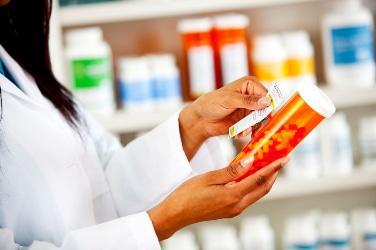Drug prices
The sale of drugs in South Africa earned pharmaceutical companies about R8,25-billion last year, but the public sector only accounted for 24 percent of sales despite the fact that over 80 percent of the population depends on state health.
This translates into R59.36 being spent on every person using the public health system last year, as opposed to a staggering R800.29 per person in private health, according to Andy Gray and Thulani Matsebula writing in the latest SA Health Review.
Not only are the inequities in drug expenditure evident within our country, but also on a global scale. Despite large populations and a preponderance of diseases, all the countries in sub-Saharan Africa put together account for a mere 1,3 percent of global drug sales. North America provides the biggest market (46,7 percent), followed by Europe (24,8 percent) and Japan (11, 3 percent).
The pharmaceutical industry is also the most profitable sector in America, with profit margins of more than three times those of other leading companies, say Gray and Matsebula.
Chief executive officers of the top 10 pharmaceutical firms each earned some R75-million in 1999, plus stock options worth about another R75-million each.
Contrary to popular belief, marketing and administration swallowed more than three times the cost of research and development of new drugs, according to a 1999 survey of the top 12 drug companies. Only 12,4 percent of expenditure was devoted to research and development.
But Gray and Matsebula warn that comparing prices for individual drugs from country to country is a difficult process, complicated the availability of generic drugs, different pack sizes and exchange rates.
In addition, they argue that a number of issues influencing drug pricing in this country are dealt with by the Medicines and Related Substances Act of 1997. However, the Pharmaceutical Manufacturers’ Association’s court challenge of the Act is preventing these measures from being implemented.
Author

Kerry Cullinan is the Managing Editor at Health-e News Service. Follow her on Twitter @kerrycullinan11
Republish this article
This work is licensed under a Creative Commons Attribution-NoDerivatives 4.0 International License.
Unless otherwise noted, you can republish our articles for free under a Creative Commons license. Here’s what you need to know:
You have to credit Health-e News. In the byline, we prefer “Author Name, Publication.” At the top of the text of your story, include a line that reads: “This story was originally published by Health-e News.” You must link the word “Health-e News” to the original URL of the story.
You must include all of the links from our story, including our newsletter sign up link.
If you use canonical metadata, please use the Health-e News URL. For more information about canonical metadata, click here.
You can’t edit our material, except to reflect relative changes in time, location and editorial style. (For example, “yesterday” can be changed to “last week”)
You have no rights to sell, license, syndicate, or otherwise represent yourself as the authorized owner of our material to any third parties. This means that you cannot actively publish or submit our work for syndication to third party platforms or apps like Apple News or Google News. Health-e News understands that publishers cannot fully control when certain third parties automatically summarise or crawl content from publishers’ own sites.
You can’t republish our material wholesale, or automatically; you need to select stories to be republished individually.
If you share republished stories on social media, we’d appreciate being tagged in your posts. You can find us on Twitter @HealthENews, Instagram @healthenews, and Facebook Health-e News Service.
You can grab HTML code for our stories easily. Click on the Creative Commons logo on our stories. You’ll find it with the other share buttons.
If you have any other questions, contact info@health-e.org.za.
Drug prices
by Kerry Cullinan, Health-e News
March 2, 2001


